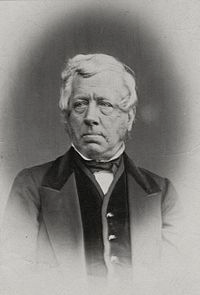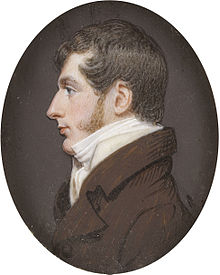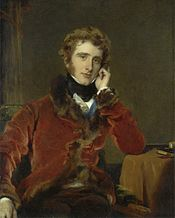Regency Personalities Series
In my attempts to provide us with the details of the Regency, today I continue with one of the many period notables.
Harriet Sutherland-Leveson-Gower Duchess of Sutherland
21 May 1806 – 27 October 1868

Harriet Sutherland-Leveson-Gower
Harriet Elizabeth Georgiana Sutherland-Leveson-Gower Duchess of Sutherland was the third daughter of George Howard, 6th Earl of Carlisle and his wife Lady Georgiana Cavendish, who was a daughter of the famous Georgiana, Duchess of Devonshire.
On 28 May 1823 she was married to her cousin George Sutherland-Leveson-Gower, Earl Gower, who had been elected M.P. for St. Mawes, Cornwall, in 1808, and succeeded his father as second Duke of Sutherland in 1833. Gower was twenty years older than her, but their union proved one of affection and produced four sons and seven daughters.
The Duchess of Sutherland held a social position of high influence, aided by her friendship to Queen Victoria as well as her family’s great wealth. By the Duchess’ influence Stafford House, St. James’s Palace, became an important centre of society, and the starting-point of various philanthropic undertakings. There the protest of the English ladies against American slavery was framed in 1853. The Duchess stance on slavery was heavily criticised by Karl Marx when her mother-in-law, the previous Duchess was then (1853) associated for the Highland Clearance of local Gaels in Sutherlandshire three decades prior, so that she could reuse 794,000 acres of land for commercial sheep farming.
On the accession of Queen Victoria the Duchess was appointed Mistress of the Robes, and held that post when the Whigs were in office until her husband’s death. From the Queen’s refusal to part with the Duchess and her other ladies arose the Bedchamber Crisis of 1839, with the result that the Whigs returned to office. Victoria gave a sympathetic description of the Duchess’s character, and after the death of Prince Albert, the prince consort, spent the first weeks of her widowhood with the Duchess as her solitary companion.
In 1861 the 4th Rogart Company of the 1st Sutherland Volunteer Rifle Corps formed up and bore the title, Duchess Harriet’s Company Rogart upon the pouch-belt plate.
The Duchess’s last public appearance was at the Prince of Wales’s marriage in 1863. In that year she was seized with an illness from which she never recovered. However, she was able to entertain Garibaldi, for whom she had great admiration, at Chiswick House and Trentham, Staffordshire, during his visit to England in April 1864. She died 27 October 1868, at her London residence, Stafford House, aged 62. She was subsequently interred in the Dukes of Sutherland’s mausoleum in Trentham. Gladstone was one of the pall-bearers at her funeral. The Duchess’s letters, of which a selection was published by her son Lord Ronald Gower, prove her to have been possessed of an affectionate disposition, with some sense of humour. She had also an interest in architecture and gardening.
On 18 May 1823 Harriet married George Sutherland-Leveson-Gower, Earl Gower, eldest son of the 2nd Marquess of Stafford, and a man twenty years her senior. Her father-in-law was created Duke of Sutherland in 1833, and was succeeded by his son later that year, whereupon Harriet became the Duchess of Sutherland.
They had eleven children:
- Lady Elizabeth Georgiana, married George Douglas Campbell, 8th Duke of Argyll and had issue.
- Lady Evelyn, married Charles Stuart, 12th Lord Blantyre
- Lady Caroline Leveson-Gower, married Charles FitzGerald, 4th Duke of Leinster and had issue.
- Lord George Granville William, succeeded as 3rd Duke.
- Lady Blanche Julia Sutherland-Leveson-Gower
- Lord Frederick George
- Lady Constance Gertrude, married Hugh Grosvenor, 1st Duke of Westminster and had issue.
- Lady Victoria Sutherland-Leveson-Gower
- Lord Albert, married Grace Abdy, daughter of Sir Thomas Neville Abdy, 1st Baronet and had issue, including Frederick Neville Sutherland Leveson-Gower.
- Lord Ronald Charles Sutherland-Leveson-Gower
- Lady Alexandrina Sutherland-Leveson-Gower
In 1871, while her son-in-law, the Duke of Argyll, was serving in the Cabinet, his son (Harriet’s grandson), Lord Lorne, married one of Victoria’s daughters, Princess Louise. Harriet’s eldest son became 3rd Duke of Sutherland in 1861. Her children were respectively a Duke, and three Duchesses.
Read Full Post »




































